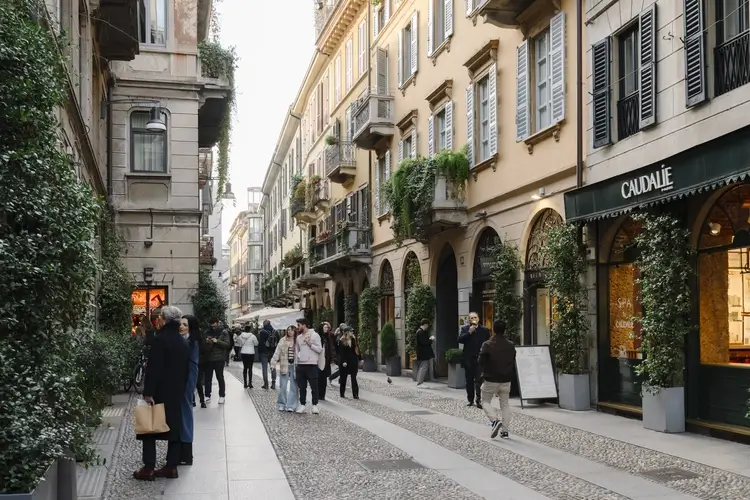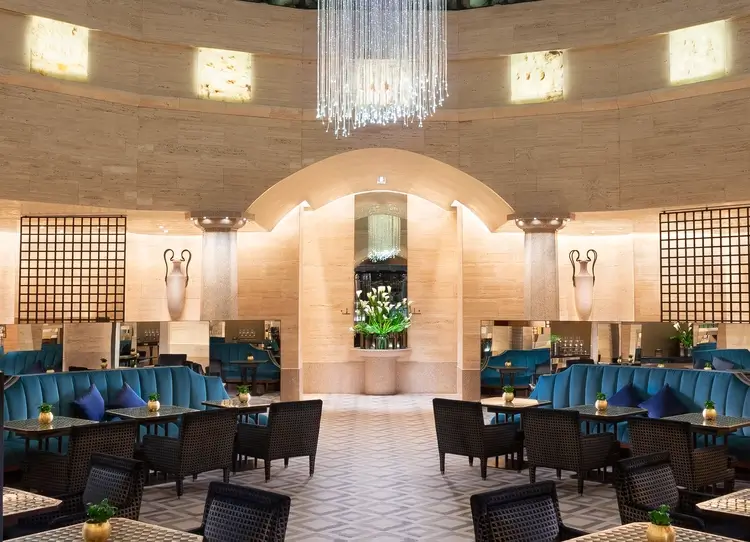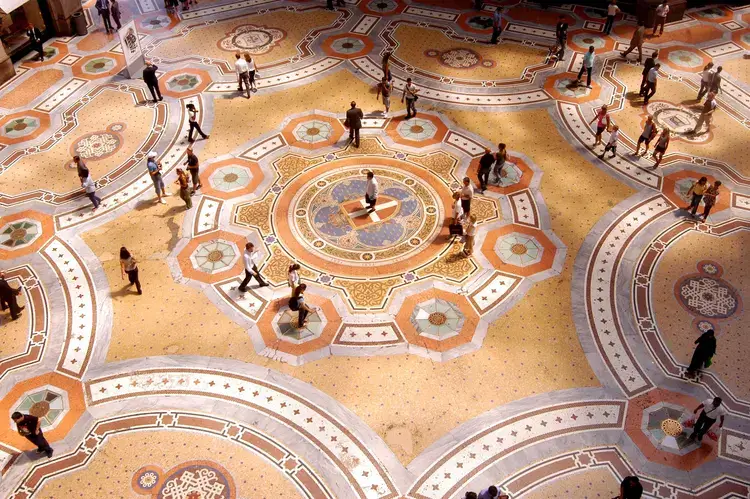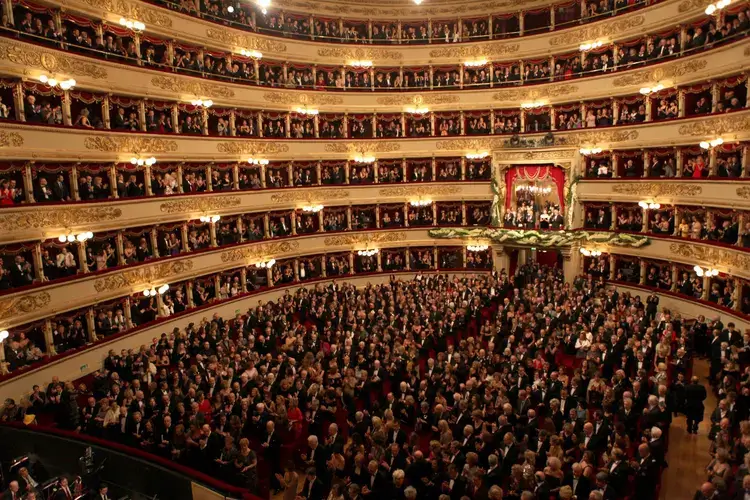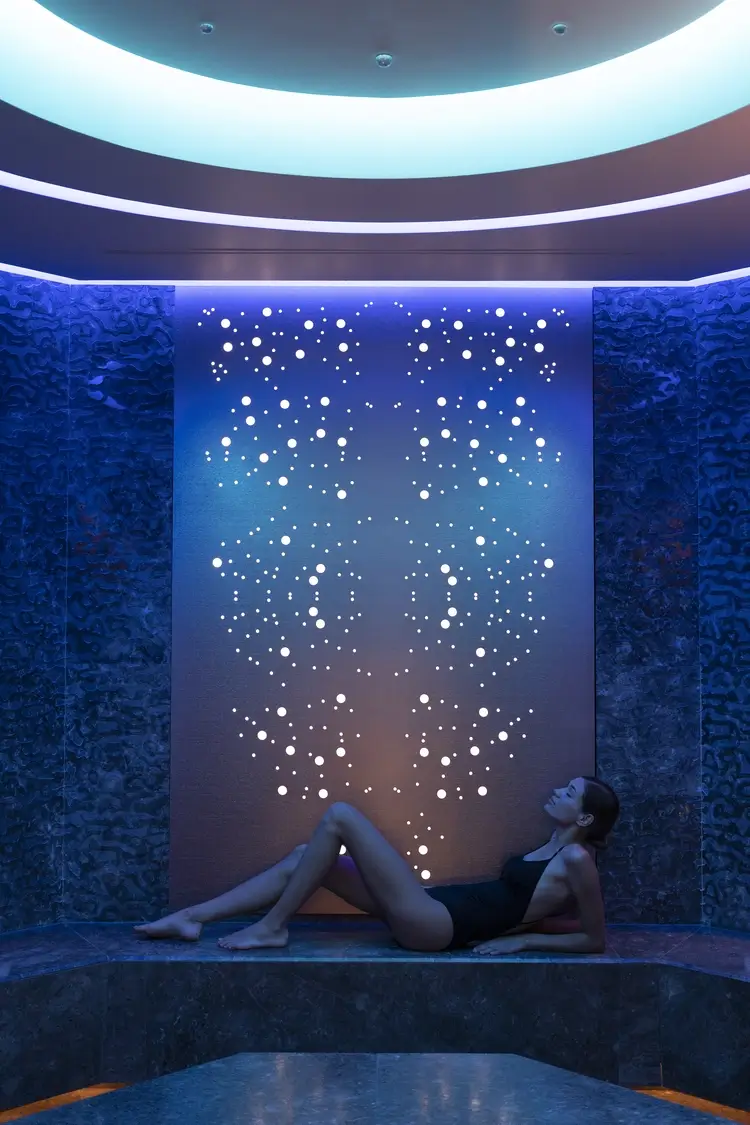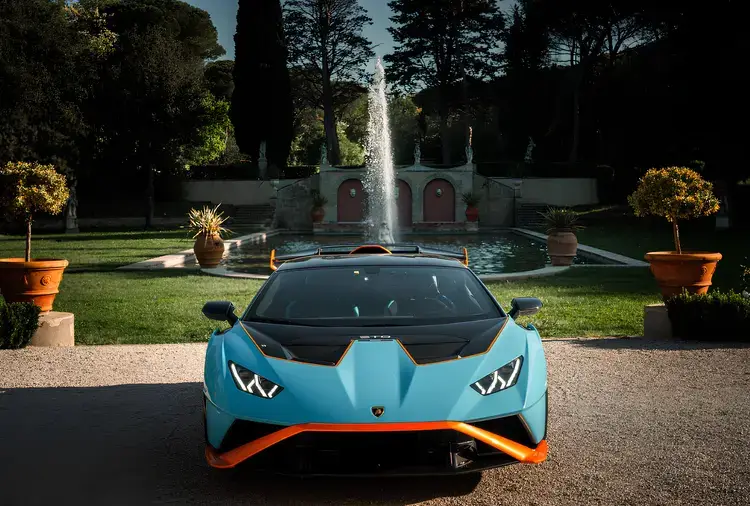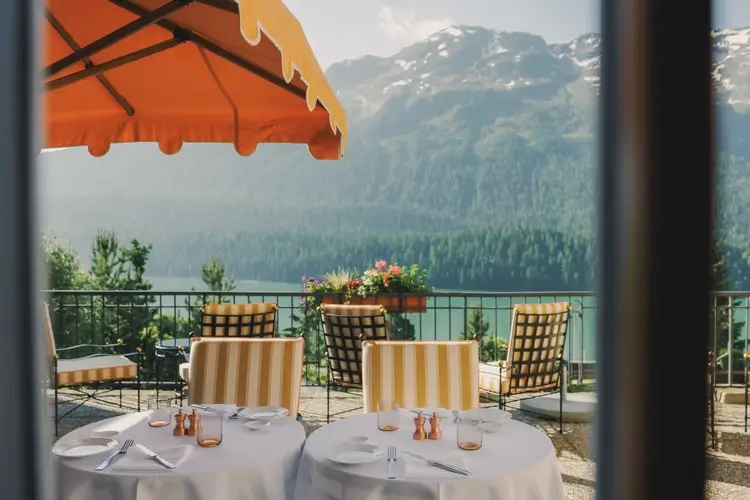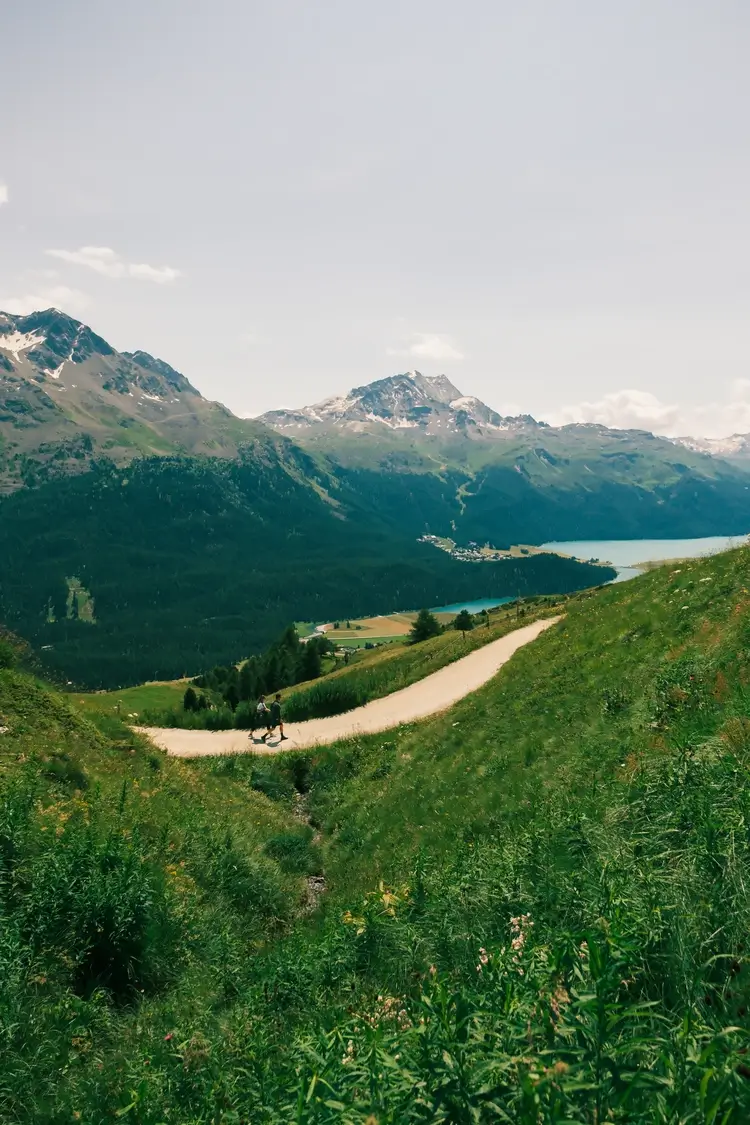For decades, Milan got a bad rap. Lacking Rome’s sites of antiquity, Naples’s Eat, Pray, Love-famous pizza, or the picture postcard views of Florence and Venice, Italy’s second biggest city was overlooked by Italians and tourists alike—in spite of blockbuster attractions like Da Vinci’s The Last Supper, La Scala opera house and the iconic Duomo. The de facto capital of northern Italy began to transform, however, in 2015 as the World Expo brought with it investment and a global spotlight. Then in 2020, Italy became an early poster child for the devastation wrought by COVID, and Milan was among those hardest hit. Since then, the city has recovered and emerged more stunning than ever, an upwards trajectory set to continue as the city will host the 2026 Olympics.
“Milan is increasingly becoming the ‘place to be’ in all of Europe,” said the concierge at the Park Hyatt Milan. Located steps from the Galleria Vittorio Emanuele II, the hotel also underwent a post-pandemic resurgence, undergoing a renovation that completed in April 2024. Under the careful direction of designer Flaviano Capriotti, named to the Architectural Digest 100 in Italy last year, every touch in the property is a love letter to Lombardy—from its bathroom counters made of green marble from the Dolomites to the corridors carved in beige, white and rose evoking the Duomo’s blush. In both design and location, the Park Hyatt makes the ideal home base for getting to know the city.
“Milan is now considered a cool destination, and the city has been rediscovered for its cultural scene in addition to its well-established reputation for fashion and design,” the concierge added.
Visiting Milan today, you can feel it. The city exudes a distinctly Milanese charisma. Home to high fashion, decadent northern Italian cuisine and this breezy feeling of Lombard refinement, Milan blends old world style with creature comforts. For visitors looking to get a sense of what “Milan’s moment” means, the city boasts no shortage of options to experience its classic and contemporary offerings.
Shop Italy’s Designer Brands and Vintage Boutiques
Milan has long been revered as Italy’s fashion capital, and the city and region are the birthplace of Prada, Missoni and Armani. Prada opened its first store in the world in 1913 in the Galleria to sell high-end luggage to stylish jetsetters. Shoppers today can peruse selections of fine leather goods at the original Fratelli Prada location, or else hop across the Galleria to their men’s and women’s stores. Find many of the world’s top designers inside the Galleria, including Italian mainstays Armani and Gucci. For eye-catching Lombard knits, Missoni’s flagship store is only a few blocks away. The highest flyers might book a private appointment with an atelier, testing perfumes that princesses wear.
As much as Milan is a fashion house junkie’s dream, it’s also a hub for vintage shopping and independent designers. Venture into the Brera district for secondhand finds at Cavalli e Nastri. Italian for “horses and ribbons,” the shop emanates a sense of “old-fashion glamour” with its collections of American costume jewelry and vintage Valentino. This once bohemian neighborhood is a designer’s euphoria: find ceramics like confectionery at Ginori 1735, gorgeous stationery at Pettinaroli e Figli, the latest in Japanese design at Time & Style and avant-garde couture and home goods at 10 Corso Como. Massimo Alba operates a boutique in the neighborhood, where they sell gorgeous linen pants, leather loafers and cotton button-downs cut for a night out in Italy’s fashion capital.
Brush Elbows with Milanese Businesspeople at Classic Eateries
“Milan is a trailblazing city at heart. In the past few years, it’s become a culinary mecca,” says Stanley Tucci in his HBO series, Searching for Italy.
Northern Italy is famous for cutlets, polenta and saffron risotto, heartier fare for alpine people. El Tombon de San Marc serves up the city’s best in a sumptuous green dining room that seems outfitted by your chic Italian grandparents.
For a caffè macchiato, croissants and candies seemingly dropped out of Charlie and the Chocolate Factory in a similarly Lombardy green venue, visit Marchesi. Since 1824, the patisserie has made signature Milanese sweets. Now under the Prada Group’s management, Marchesi operates multiple locations around the city.
The Park Hyatt concierge also recommends Rigolo, a family-run restaurant that puts a Milanese spin on Tuscan flavors. Il Baretto is an elegant, traditional eatery—think crisp, white tablecloths and tartan carpets—and Trattoria Lazzati seeks to showcase “the authentic soul” of the city in swanky, ostentatious style. Trattoria del Ciumbia serves the region’s classics in a decidedly cool, midcentury dining room.
By the Duomo, Pellico 3 turns up the heat on Milanese classics. Executive Chef Guido Paternollo has made it his mission to bring his international training to his hometown cuisine. Tortelli filled with smooth sheep ricotta sit like little rubies in a smoky and smooth ‘nduja and pomegranate sauce—it’s food you’re not sure whether to eat or just admire.
Bathe Like the Romans––or the Milanese
Roman baths were lauded as gathering points and rejuvenation destinations for a reason. At QC Termemilano, the Roman baths get a smart, industrial update—the 28 wellness rooms comprising this spa are notched inside of a 19th century tramway company office.
Outdoor bathers can soak inside the courtyard, peering out at skyscrapers sprouting beyond the oasis walls. Underground, the baths continue endlessly: steam rooms, saunas, pools, salt baths and “dream chambers”—water beds floating in a dark room to an instrumental soundtrack. Each room promises its own wellness secrets.
To unwind more privately, Shiseido Spa Milan offers dramatic views from the top of the Excelsior Hotel Gallia. The spa’s sauna, steam room and salt cabin offer a peaceful retreat before one of the spa’s signature treatments, which feature products from the Japanese skincare giant.
Drive a Ferrari to Lake Como, Emilia-Romagna or Saint Moritz
For many visitors, northern Italy is synonymous with luxury cars—both Ferrari and Lamborghini are headquartered in Emilia-Romagna, about two hours southeast of Milan. While visitors are in the area to tour the car brands’ museums, they might also enjoy the factory tour in Modena, where they can sample the city’s famous balsamic vinegar.
Those who prefer a more immersive experience can arrange to take a luxury car for a spin. The Park Hyatt partners with Moveolux to get their guests behind the wheel of a Ferrari, Lamborghini or other sports car. Milan is well-positioned for exploring the surrounding area, including Italy’s renowned lakes.
Many scenic towns and villages, including Bellagio, Varenna, Tremezzo and Como, ring Lake Como. The best way to view them is from the lake, and private boat tours can be arranged. The area is also home to many famous villas, so well-appointed that George Clooney set up shop in Laglio’s Villa Oleandra.
For a longer journey, St. Moritz, Switzerland sits about three hours northeast of Milan. This year-round resort town is a gem of the Alps. Summertime thrill seekers can go hiking, windsurfing and mountain biking. In the winter, the party continues with skiing, ice skating, curling and polo matches played on the frozen lake. For a gentler day, explore art collections at Hauser & Wirth St. Moritz or recharge at the spas at the Kulm Hotel, Grand Hotel Kronenhof or OVAVERA.
These quaint towns are a pleasant detour from the city, but visitors will zip back to the city at Ferrari speed—Milan is waiting.


